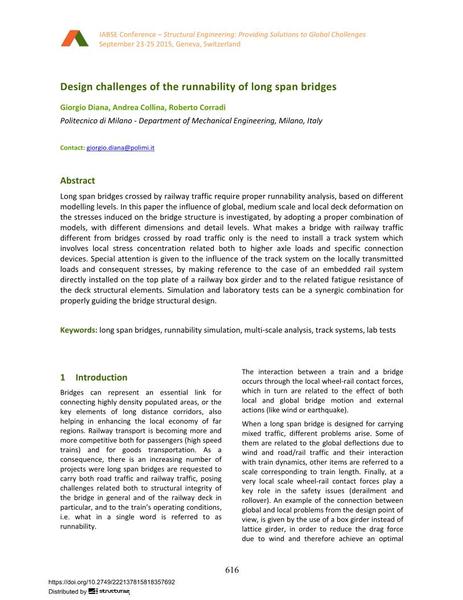Design challenges of the runnability of long span bridges

|
|
|||||||||||
Détails bibliographiques
| Auteur(s): |
Giorgio Diana
Andrea Collina Roberto Corradi (Politecnico di Milano - Department of Mechanical Engineering, Milano, Italy) |
||||
|---|---|---|---|---|---|
| Médium: | papier de conférence | ||||
| Langue(s): | anglais | ||||
| Conférence: | IABSE Conference: Structural Engineering: Providing Solutions to Global Challenges, Geneva, Switzerland, September 2015 | ||||
| Publié dans: | IABSE Conference Geneva 2015 | ||||
|
|||||
| Page(s): | 616-622 | ||||
| Nombre total de pages (du PDF): | 7 | ||||
| Année: | 2015 | ||||
| DOI: | 10.2749/222137815818357692 | ||||
| Abstrait: |
Long span bridges crossed by railway traffic require proper runnability analysis, based on different modelling levels. In this paper the influence of global, medium scale and local deck deformation on the stresses induced on the bridge structure is investigated, by adopting a proper combination of models, with different dimensions and detail levels. What makes a bridge with railway traffic different from bridges crossed by road traffic only is the need to install a track system which involves local stress concentration related both to higher axle loads and specific connection devices. Special attention is given to the influence of the track system on the locally transmitted loads and consequent stresses, by making reference to the case of an embedded rail system directly installed on the top plate of a railway box girder and to the related fatigue resistance of the deck structural elements. Simulation and laboratory tests can be a synergic combination for properly guiding the bridge structural design. |
||||
